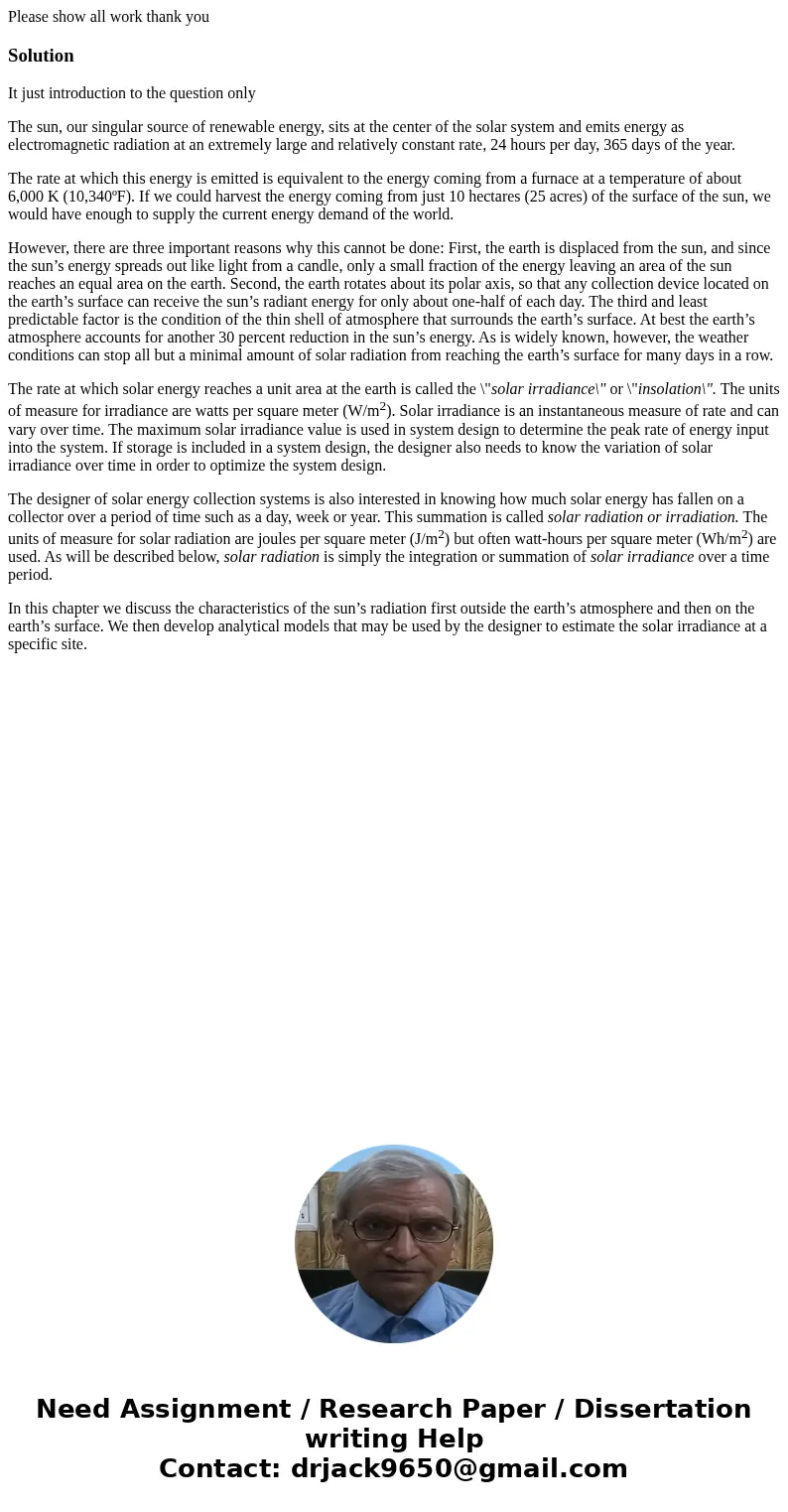Please show all work thank youSolutionIt just introduction t
Please show all work thank you
Solution
It just introduction to the question only
The sun, our singular source of renewable energy, sits at the center of the solar system and emits energy as electromagnetic radiation at an extremely large and relatively constant rate, 24 hours per day, 365 days of the year.
The rate at which this energy is emitted is equivalent to the energy coming from a furnace at a temperature of about 6,000 K (10,340ºF). If we could harvest the energy coming from just 10 hectares (25 acres) of the surface of the sun, we would have enough to supply the current energy demand of the world.
However, there are three important reasons why this cannot be done: First, the earth is displaced from the sun, and since the sun’s energy spreads out like light from a candle, only a small fraction of the energy leaving an area of the sun reaches an equal area on the earth. Second, the earth rotates about its polar axis, so that any collection device located on the earth’s surface can receive the sun’s radiant energy for only about one-half of each day. The third and least predictable factor is the condition of the thin shell of atmosphere that surrounds the earth’s surface. At best the earth’s atmosphere accounts for another 30 percent reduction in the sun’s energy. As is widely known, however, the weather conditions can stop all but a minimal amount of solar radiation from reaching the earth’s surface for many days in a row.
The rate at which solar energy reaches a unit area at the earth is called the \"solar irradiance\" or \"insolation\". The units of measure for irradiance are watts per square meter (W/m2). Solar irradiance is an instantaneous measure of rate and can vary over time. The maximum solar irradiance value is used in system design to determine the peak rate of energy input into the system. If storage is included in a system design, the designer also needs to know the variation of solar irradiance over time in order to optimize the system design.
The designer of solar energy collection systems is also interested in knowing how much solar energy has fallen on a collector over a period of time such as a day, week or year. This summation is called solar radiation or irradiation. The units of measure for solar radiation are joules per square meter (J/m2) but often watt-hours per square meter (Wh/m2) are used. As will be described below, solar radiation is simply the integration or summation of solar irradiance over a time period.
In this chapter we discuss the characteristics of the sun’s radiation first outside the earth’s atmosphere and then on the earth’s surface. We then develop analytical models that may be used by the designer to estimate the solar irradiance at a specific site.

 Homework Sourse
Homework Sourse